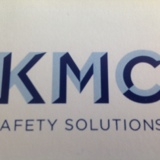Information
-
Audit Title
-
Client / Site
-
Conducted on
-
Prepared by
-
Location
-
Personnel
1. Job Information
-
1.1. Phone number for the nearest medical center posted?
-
1.2. Weekly safety meetings up to date?
-
1.3. Is JHA being done and reviewed with crew?
-
1.4. Work areas properly signed and barricaded?
-
1.5. Is each employee instructed in the recognition and avoidance of unsafe conditions?
-
1.6. Are first aid supplies readily accessible?
-
1.7. Is facility for treatment of injured employees located within 15 minutes of the jobsite? If not, is there an employee trained in first aid?
-
1.8. Are telephone numbers, physicians, hospitals posted?
-
1.9. Are potable drinking and toilet facilities available at the jobsite?
-
1.10. Is there protection for blood borne pathogens?
2. Housekeeping
-
2.1. General neatness of work area?
-
2.2. Projecting nails removed or bent over?
-
2.3. Waste containers provided and used?
-
2.4. Passageways and walkways clear?
3. Fire prevention
-
3.1. Adequate fire extinguishers, checked and accessible?
-
3.2. Phone number of fire department posted?
-
3.3. "No smoking" posted and enforced near flammables?
4. Electrical
-
4.1. Extension cords or attachment cords with bare wires, missing ground prongs or damaged are taken out of service?
-
4.2. Ground fault circuit interrupters being used?
-
4.3. Terminal boxes equipped with required boxes?
-
4.4. Are flexible cords and cables protected from damage?
-
4.5. Are unused openings in cabinet boxes and fittings closed?
-
4.6. Are all cabinets, panels and switches located in wet locations enclosed in weather proof enclosures?
5. Hand, power and powder actuated tools
-
5.1. Hand tools inspected regularly?
-
5.2. Guards in place on machine, such as saws?
-
5.3. Right tool being used for the job at hand?
-
5.4. Operators of powder actuated tools are licensed?
6. Fall protection
-
6.1. Safety rails and cables are secured properly?
-
6.2. Employees exposed to fall hazards are tied off?
-
6.3. Employees below are protected from falling objects?
-
6.4. Employees using body belts for positioning devices only?
-
6.6. Are employees working 4' above a lower level protected by guard rails, safety nets, personal fall arrest system?
7. Ladders
-
7.1. Ladders extend at least 36" above the landing?
-
7.2. Ladders are secured to prevent slipping, sliding, or falling?
-
7.3. Ladders with split or missing rungs are taken out of service?
-
7.4. Step ladders are used in fully open position?
-
7.5. No step at top two rungs of step ladder?
8. Scaffolding
-
8.1. Is all scaffolding inspected daily?
-
8.2. Erected in sound rigid footing?
-
8.3. Tied to structure as required?
-
8.4. Guard rails, intermediate rails, toe boards and screens in place?
-
8.5. Planking is sound and sturdy?
-
8.6. Proper access provided?
-
8.7. Employees below are protected from falling objects?
9. Floor and wall openings
-
9.1. All floor or deck openings are planked over or barricaded?
-
9.2. Perimeter protection is in place?
-
9.3. Deck planks are secured?
-
9.4. Materials are stored away from edge?
10. Trenching, Excavation and shoring
-
10.1. Competent person on hand inspecting daily?
-
10.2. Excavations over 5'in depth are shored or sloped back?
-
10.3. Materials are stored at least 2' away from trench?
-
10.4. Equipment is a safe distance way from edge of trench or excavation?
-
10.5. Ladders provided every 25' in trench more than 4' deep?
-
10.6. Have underground utility installations been located?
-
10.7. Are employees exposed to vehicular traffic wearing warning vests of reflectorized or highly visible material
11. Material Handling
-
11.1. Materials are properly stored or stacked?
-
11.2. Employees are proper lifting methods?
-
11.3. Taglines are used to guide loads?
-
11.4. Proper number of workers for each operation?
12. Welding and Burning
-
12.1. Gas cylinders stored upright and secured?
-
12.2. proper separating distance between fuels and oxygen? min 20?
-
12.3. Burning/Welding goggles or shields are used?
-
12.4. Fire extinguishers are nearby?
-
12.5. Hoses and regulators are in good conditions?
13. Cranes
-
13.1. Outriggers are extended and swing radius barricaded?
-
13.2. Operator is familiar with load charts?
-
13.3. Crane operator logs are up to date?
-
13.4. Employees kept from under suspended loads?
-
13.5. Chains and slings inspected and tagged as required?
-
13.6. Hand signal charts are on crane?
14. Concrete construction
-
14.1. Employees are protected from cement dust?
-
14.2. Exposed skin covered?
-
14.3. Runways are adequate?
-
14.4. Walls over 8' are supported?
-
14.5. Are all protruding reinforcing rods covered?
-
14.6. Is lock-out/tag-out procedure in use on any machinery where inadvertent operation could cause injury?
15. Personal protective equipment (PPE)
-
15.1. Hardhats are being worn?
-
15.2. Safety glasses are being worn?
-
15.3. Respirators are used when required?
-
15.4. Hearing protection worn when required?
-
15.5. Traffic vests being worn?
16. Vehicles
-
16.1. Do vehicles, earth moving or compacting equipment with an obstructed view to the rear have a back up alarm or used with an observer?
-
16.2. Do vehicles and earth moving equipment have seat belts and are they used?
-
16.3. Are flag men wearing reflectorized garments and using flags, sign paddles or lights?
17 Stairs
-
17.1. Are flights of stairs with 4 or more raisers equipped with standard stair railings or handrails?
18. Miscellaneous
-
18.1. Is a written Hazard Communication Program on site including MSDS, Material list, Container labeling, employee training?
-
18.2. Is exposure to lead or lead base paint, such as paint removal controlled?
-
18.3. Is exposure to silica, such as sand blasting, using sand or cutting brick or cinder-block controlled?
-
18.4. Is exposure to asbestos controlled?
Corrective Actions
-
Enter any corrective actions that will be undertaken
Sign Off
-
On site representative
-
Auditor's signature









